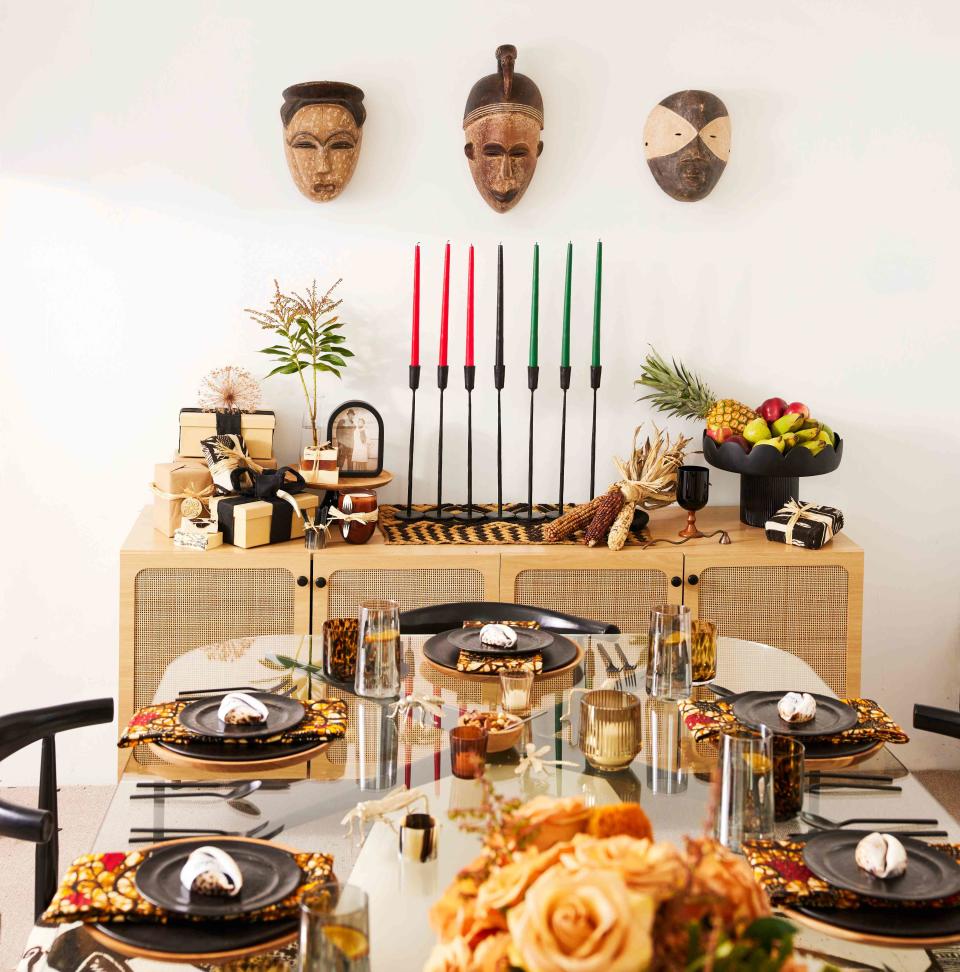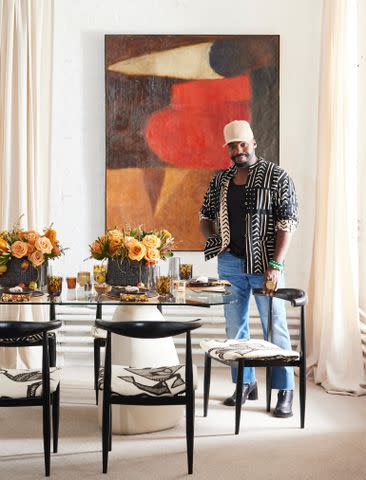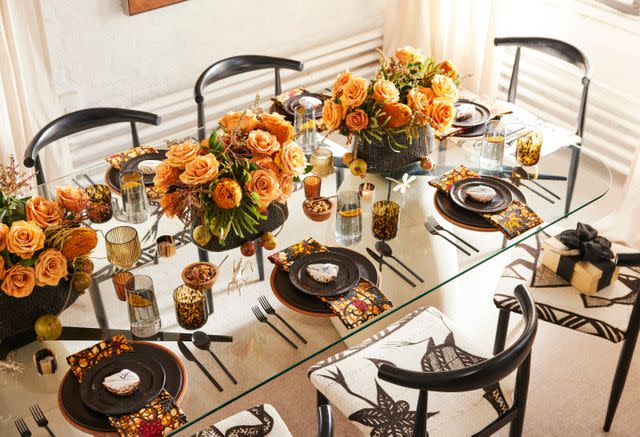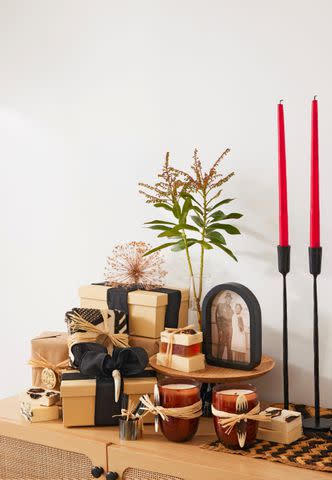Designer Tips for Creating a Beautiful Kwanzaa Tablescape
At his Bronx, NY, home, an artist and stylist brings meaningful, stylish touches to his celebration of this African American cultural holiday.

Dylan Chandler
For New York City-based floral and events designer John Goodman, the end of Christmas marks the start of another celebration. The weeklong festival of Kwanzaa, which begins on December 26, was established in 1966 as a time for Black families to reflect on and rejoice in African American culture.
On each of the seven nights, the Bronx native gathers with his mother, brothers, and other relatives to light the holiday's symbolic red, black, and green candles; share stories about their ancestors; and talk about the holiday's seven principles: umoja (unity), kujichagulia (self-determination), ujima (collective work and responsibility), ujamaa (cooperative economics), nia (purpose), kuumba (creativity), and imani (faith).
The last night, John says, “is the big party.” The Goodmans invite friends and extended family members to join them for a meal that includes dishes like collard greens, okra, and jambalaya—reflecting their Southern roots—and to exchange small gifts.

Dylan Chandler
John, who spends his days designing weddings as well as corporate events and installations for brands like J. Crew, is in charge of setting a beautiful table. His approach melds the aesthetic traditions of the holiday—African prints, earthy materials, bowls of fruit—with his modern, big-city sensibility. “I want it to feel ethnic but not so literal,” John says. “One great thing about this holiday is that there aren’t really any rules.”

Dylan Chandler
John designed his Kwanzaa table around a sunset-orange and tortoiseshell palette, anchored by three lush floral arrangements. Draped pomegranate branches represent the holiday’s theme of “first fruits,” as do the brass insects scattered around the table. "Growing things always requires pollination," John says.
John’s design aesthetic is based on clean-lined, modern pieces warmed up with more eclectic, handmade elements. To balance his sleek glass table and bentwood chairs, for example, he re-covered the seats in African mud cloth (a traditional woven fabric dyed with mud) that he found at a Manhattan flea market. On the table, he paired contemporary dinner plates and flatware with botanical African wax-print napkins.
John tucks place cards into cowrie shells—culturally significant because they were once a form of currency in parts of Africa. Their earthy, tortoise shell-like pattern complements the table decor.
"Kwanzaa means 'first fruits' in Swahili, so I wanted to bring in some elements of the harvest."
John Goodman
For the centerpieces, John added golden brown ‘Toffee’ roses, Italian ruscus greenery, mustard yellow protea, pomegranates, and small sprigs of andromeda to black, harvest-basketlike, ceramic vases. When creating a monochromatic arrangement, John recommends varying the size, shape, and texture of the flowers.

Dylan Chandler
Every family does Kwanzaa a little differently, but celebrations usually include the traditional symbols of the holiday. Each is known by its Swahili name and the meaning the object brings to the table. The credenza next to John’s dining table displays the holiday’s traditional elements: corn, crops, place mats, the Unity Cup, gifts, and candles.
Corn (muhindi in Swahili) denotes children, and generally one ear is set out for each child at the table. Crops (mazao) symbolize the harvest. John likes the contents of his Kwanzaa fruit bowl to underscore his table's color scheme. Place mats (mkeka) represent the foundations of African history and serve as the base on which the items are displayed. The Unity Cup (Kikombe cha Umoja) represents the cohesiveness of the community. At John’s Kwanzaa celebration, the vessel is filled with water, apple cider, or juice, and each family member takes turns sipping to symbolize togetherness.
Gifts (zawadi) recognize parents’ love of and labor for their offspring. On the last night, guests exchange small gifts. “Some people seek out items from Black-owned businesses, since the holiday is in part about supporting the community,” John says. This year, he’s giving things from his new line of handmade soaps and candles (it launches this month on jlgoodman.com). Candles (mishumaa) in the kinara candelabra—three red, three, and one black “unity” candle—stand for the seven principles of the holiday. “Every night we light a candle, starting with the black candle and working from left to right,” John says. He used individual candlesticks to form his kinara.
For more Better Homes & Gardens news, make sure to sign up for our newsletter!
Read the original article on Better Homes & Gardens.

